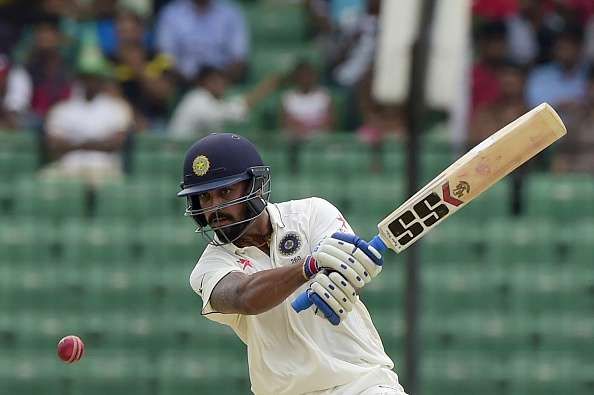
A SWOT analysis of India's Test batting line-up for the home season

Sachin Tendulkar - the last of the famous fab four - retired in November 2013 and many were left wondering if India would ever again boast of a quality batting line-up. Such was the standard of India's batting line-up, when the Fab Four were in their prime, that it was hailed the best, in an era where the Aussies dominated world cricket.
The emergence of Virat Kohli, Murali Vijay and Ajinkya Rahane have somewhat covered for the loss of these superstars. With able allies, the trio have set about rebuilding the Indian Test batting line-up. Failures abroad, against England, New Zealand, Australia and South Africa did not do justice to the talent in this batting line-up.
There was always something special about Virat Kohli. Ajinkya Rahane has such a strong technique that him scoring runs over the years was a given. Vijay looked as solid an opener as you could ask for. In Pujara, they have a batsman in the mould of Rahul Dravid, able to play the waiting game.
The big question after a series of losses abroad was if this line-up had it in them to withstand the rigours of Test cricket? The answer became more and more evident with each tour as they started mounting up huge totals to help their bowlers.
The early signs for this fantastic batting line-up are good - they have attacking options, defensive walls, lower order batsmen and good tail enders. Whether they can withstand the Kiwi and England bowling attacks, that look good on paper, is another question only time will answer. If the first Test against New Zealand is anything to go by, the signs are ominous.
A SWOT (Strength-Weakness-Opportunity-Threat) analysis of this batting line-up ahead of a home season follows:
Strengths
Strong openers:
It has to be said that replacing Shikhar Dhawan with Lokesh Rahul has been Kohli's biggest move as a captain. He has instilled some confidence in Rahul that is evident for all to see. His batting complements Murali Vijay's and both are exceptional leavers, a trait compulsory for opening batsmen. With Rahul easily capable of switching gears between attack and defence, India have two reliable forces upfront.
A dream middle order:
In Cheteshwar Pujara they have the perfect no.3. He had faced criticism initially for slowing down the innings but after returning to this line-up, he has looked solid and positive, while also scoring important runs.
Virat Kohli complements him well at no.4 and is the kind of player who can take a Test match away in a session. Such is his commitment to the cause that you can be assured he rarely fails without a fight.
Ajinkya Rahane is the right man to walk in below Pujara and Kohli. He is a calm and composed batsman with a solid technique apt for Test cricket. He flows when in fine nick and has the temperament to perform on any surface, against any kind of attack.
Rohit Sharma, Ravichandran Ashwin and Wriddhiman Saha complete a strong lower middle order. Rohit is probably a question mark considering his recent form, but there is no doubt about the talent.
Ashwin has rediscovered his batting skills that looked dead after he came onto the International scene. His centuries in the Caribbean are proof that he is more than a capable no.7.
Infact, Kohli trusts him so much that he plays five bowlers with Ashwin as the all-rounder at no.6. Saha does have a solid record. His exploits in the domestic arena are well known and he has lately been a good lower order batsman for India in Tests.
Also read: India lucky to have an all-round talent like Ravichandran Ashwin, says Waqar Younis
Strong Tail:
Ravindra Jadeja, who has three triple hundreds in domestic cricket, came in to bat at no.9 in the recent Test against New Zealand in Nagpur. Do I need to tell more about this batting line-up? The tail is as strong as ever, with Bhuvaneshwar Kumar and Umesh Yadav more than capable with the willow.